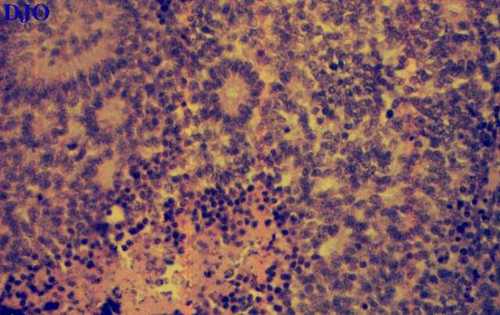Pathology Quiz 2

Figure 1
This is the pathology of an enucleated eye under high magnification using a hematoxylin and eosin stain.
This is the pathology of an enucleated eye under high magnification using a hematoxylin and eosin stain.
Answer: Retinoblastoma
2. What are the pathological findings shown?
Answer: Flexner-Wintersteiner rosettes which are essentially pathognomonic of retinoblastoma when they are present.
3. What part of the enucleated eye needs to be examined in this patient and why?
Answer: Optic nerve. Involvement of the cut edge of the optic nerve is associated with markedly increased mortality in retinoblastoma.
4. Assuming that the other eye is normal, what is the likelihood that this condition was inherited?
Answer: In a patient with unilateral and unifocal retinoblastoma the likelihood that the condition was inherited (germline) is approximately 12%.
5. If the patient inherited this condition, is he likely to develop other systemic disease?
Answer: Yes. Patients with the germline form of retinoblastoma have a much greater risk of developing other tumors, especially osteosarcoma. These patients also develop soft tissue sarcomas, melanoma, carcinoma, leukemia, and lymphoma.
6. What is the overall survival rate for this condition in the United States?
Answer: Greater than 85%